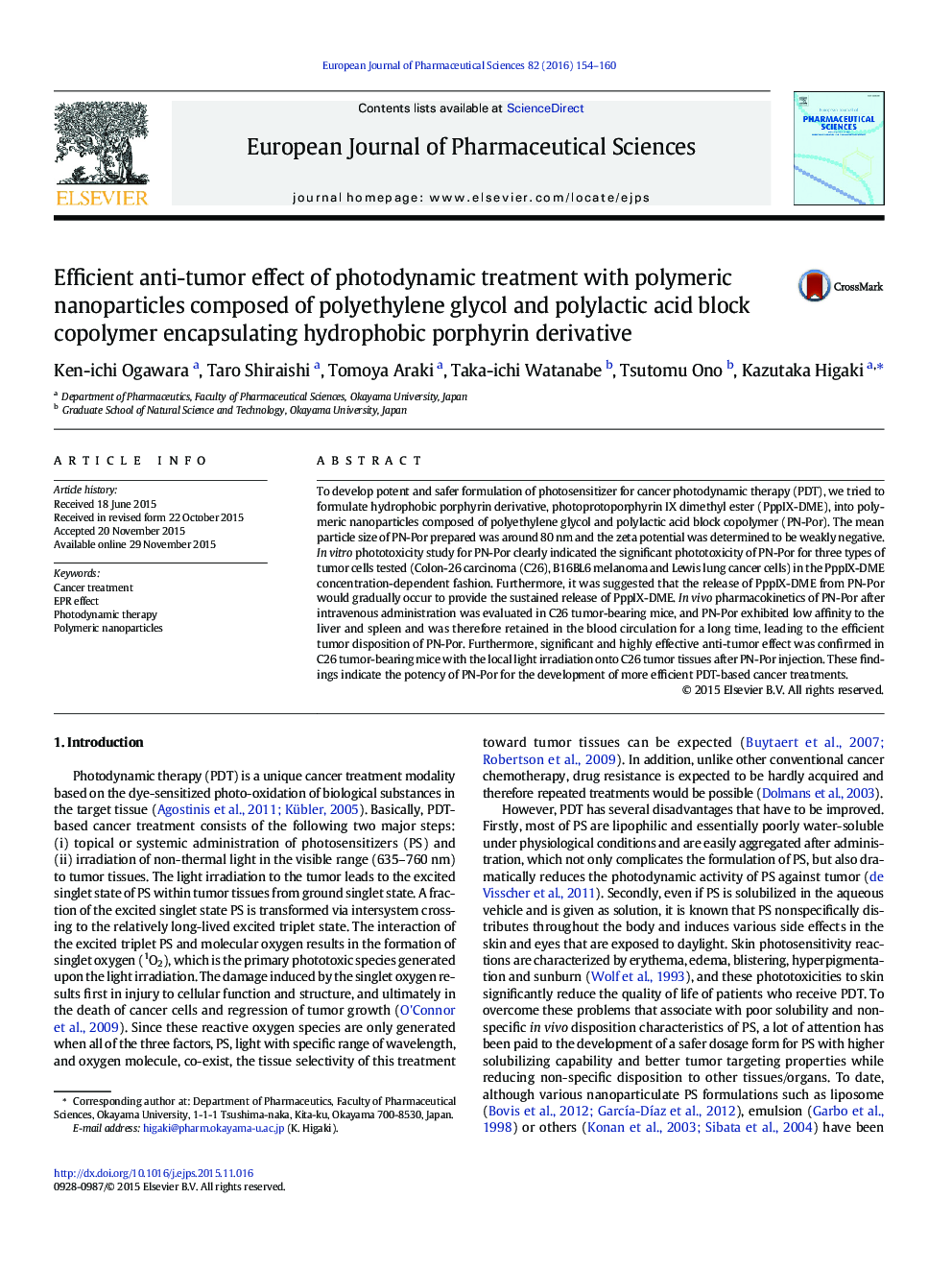| Article ID | Journal | Published Year | Pages | File Type |
|---|---|---|---|---|
| 2480181 | European Journal of Pharmaceutical Sciences | 2016 | 7 Pages |
To develop potent and safer formulation of photosensitizer for cancer photodynamic therapy (PDT), we tried to formulate hydrophobic porphyrin derivative, photoprotoporphyrin IX dimethyl ester (PppIX-DME), into polymeric nanoparticles composed of polyethylene glycol and polylactic acid block copolymer (PN-Por). The mean particle size of PN-Por prepared was around 80 nm and the zeta potential was determined to be weakly negative. In vitro phototoxicity study for PN-Por clearly indicated the significant phototoxicity of PN-Por for three types of tumor cells tested (Colon-26 carcinoma (C26), B16BL6 melanoma and Lewis lung cancer cells) in the PppIX-DME concentration-dependent fashion. Furthermore, it was suggested that the release of PppIX-DME from PN-Por would gradually occur to provide the sustained release of PppIX-DME. In vivo pharmacokinetics of PN-Por after intravenous administration was evaluated in C26 tumor-bearing mice, and PN-Por exhibited low affinity to the liver and spleen and was therefore retained in the blood circulation for a long time, leading to the efficient tumor disposition of PN-Por. Furthermore, significant and highly effective anti-tumor effect was confirmed in C26 tumor-bearing mice with the local light irradiation onto C26 tumor tissues after PN-Por injection. These findings indicate the potency of PN-Por for the development of more efficient PDT-based cancer treatments.
Graphical abstractFigure optionsDownload full-size imageDownload high-quality image (246 K)Download as PowerPoint slide
